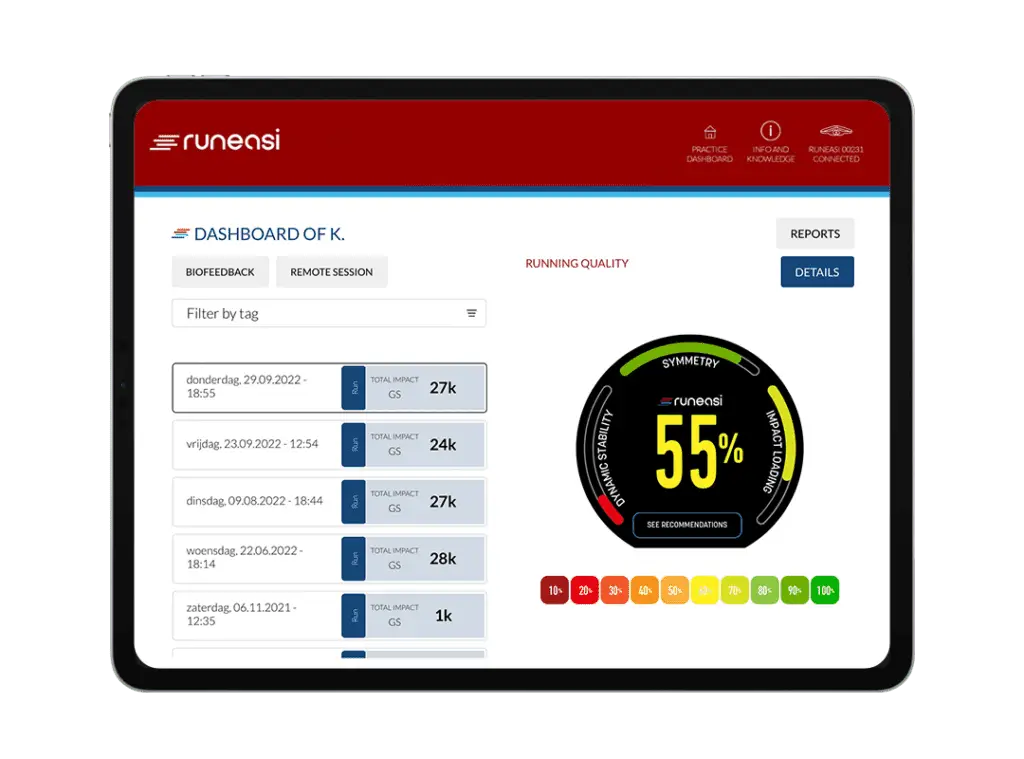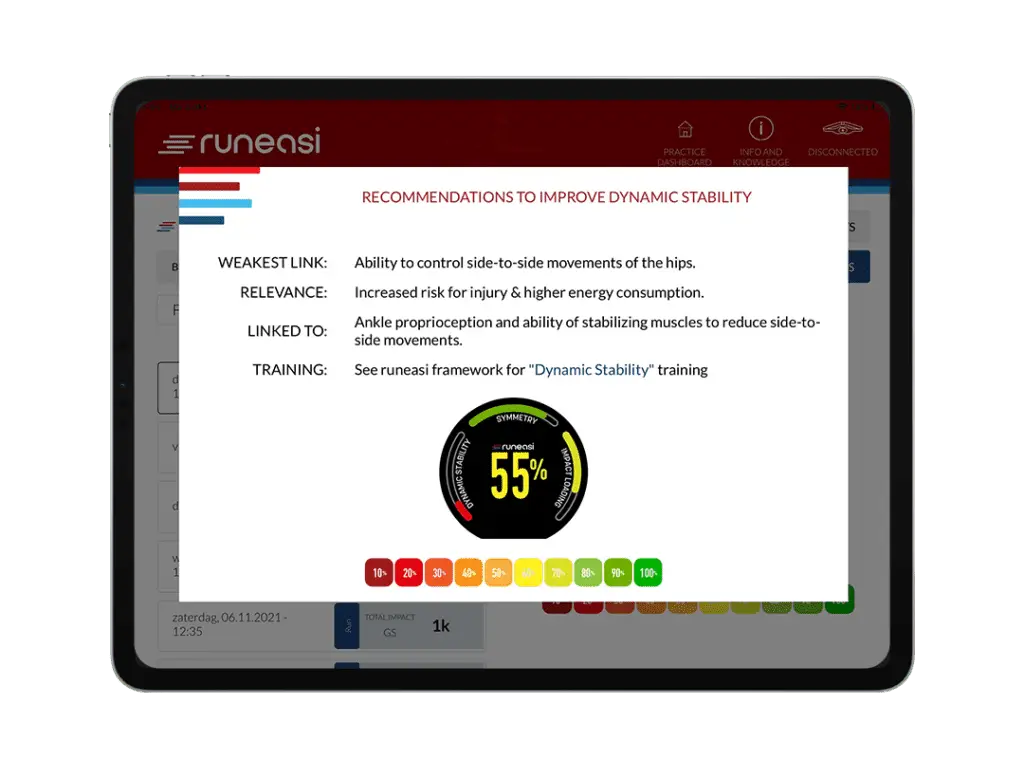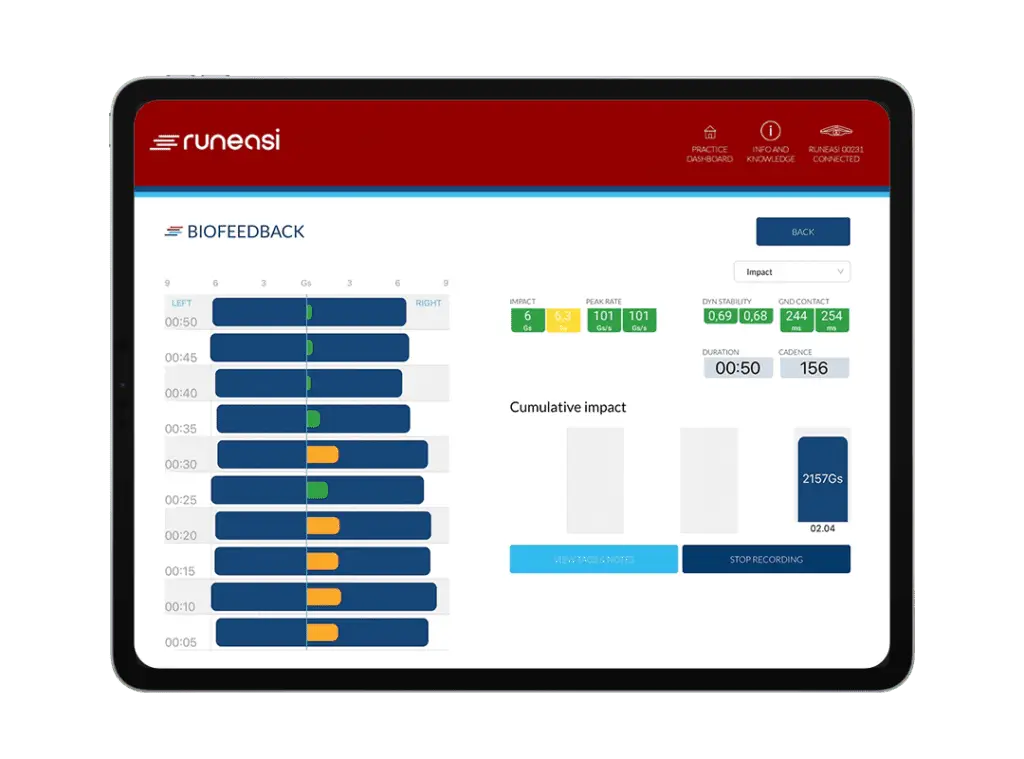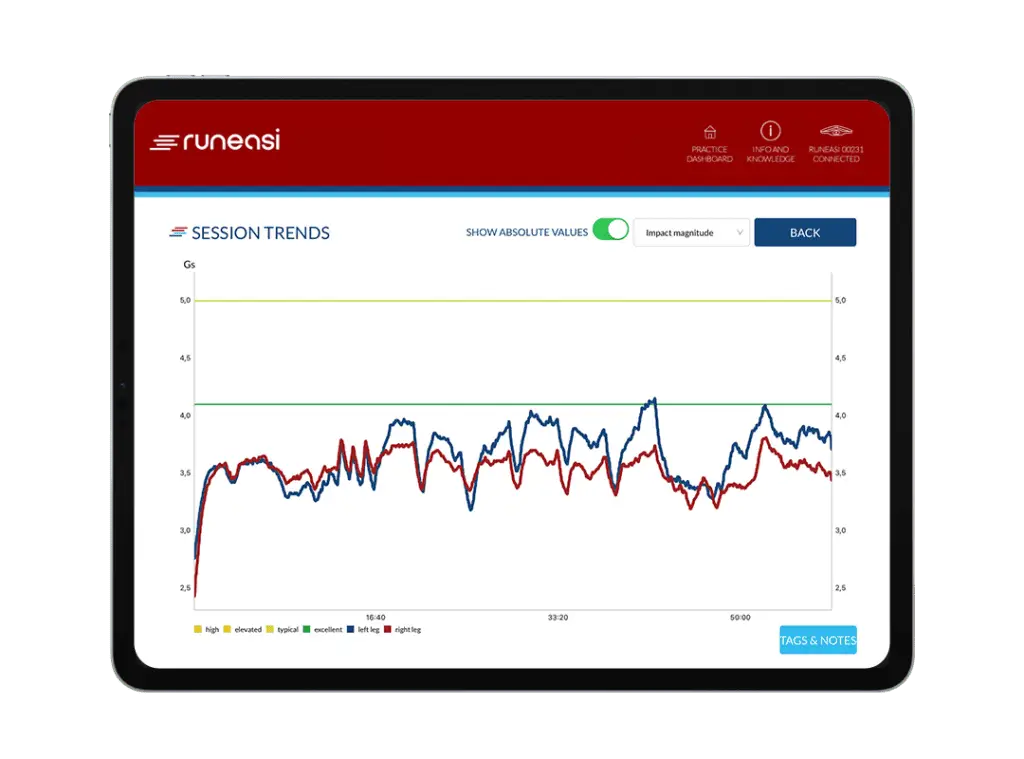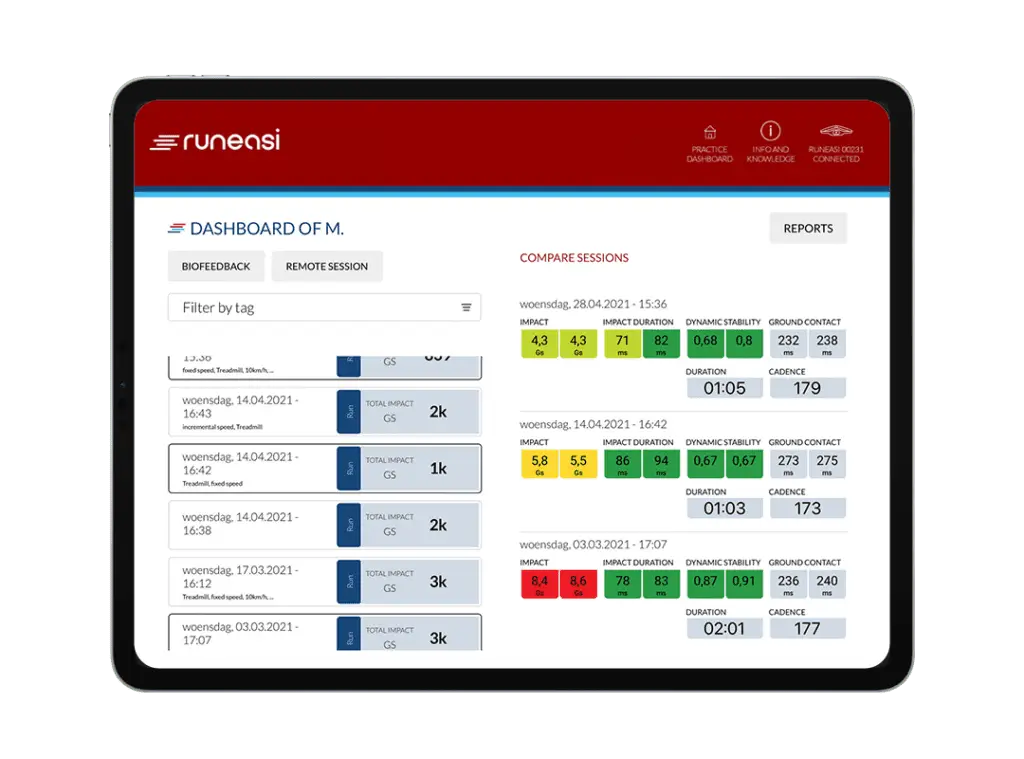impact loading
Learn about:
What is Impact loading?
Impact loading refers to how (much) we load our body while running. It encompasses two crucial parameters. Impact magnitude refers to the degree of impact exerted on your body while running. Impact duration measures how fast the impact travels through your legs. This serves as an essential indicator of your ability to effectively absorb shock. A longer impact duration suggests better shock absorption. Optimal shock absorption and low impact play a crucial role in distributing the load effectively across the lower limbs, thereby mitigating the risk of overuse injuries (e.g., stress fracture; runner’s knee)
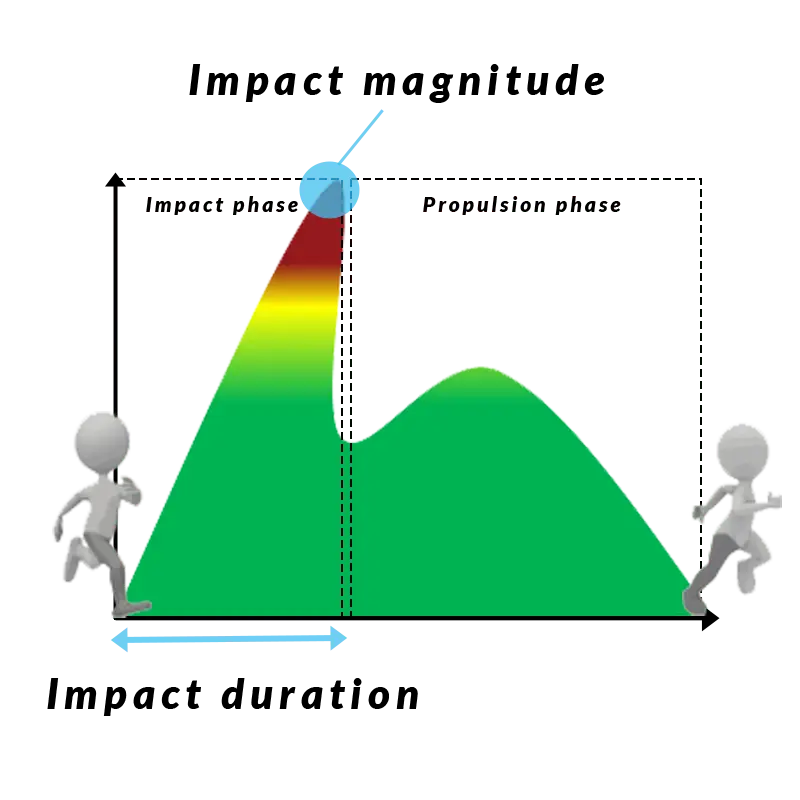
*Illustration of Impact magnitude & duration
Exercises to improve your impact loading
Impact loading is strongly determined by the capacity of the lower limb muscles and how they work together to absorb the impact. Running impacts occur within a short time frame (± 20–130 ms). Therefore, it is important to activate your muscles during a (very) short amount of time. Jump (plyometric) training is the ideal training form to learn quickly to activate the muscles. By adopting this training framework, you can enhance your ability to better cope with impacts during running.

To minimize injury risk for muscles and tendons, we recommend training at least 4 to 6 weeks of basic strength training of the lower limb muscles and supplementing with running-specific drills.
After this you can implement shock training (e.g., soft landing from a box) and ballistic movements (e.g., repeated split squat jumps) to train your elasticity.
Example exercises
* Please note that the exercises provided are for illustrative purposes only and may not be suitable for everyone. We recommend discussing these exercises with your Runeasi-expert to determine if they are appropriate for your individual needs and abilities.
Strength capacity
Exercises
Shock exercises
Exercises
Ballistic exercises
Exercises
Light plyometrics
Exercises
Heavy plyometrics
Exercises
Running drills
Exercises
Tips for your next run
To reduce your impact while you run, you can consider using the following tips during your next runs. Here are a few options. Ensure that the suggested tips contribute to your overall well-being during your run, without exacerbating any symptoms or causing discomfort.



